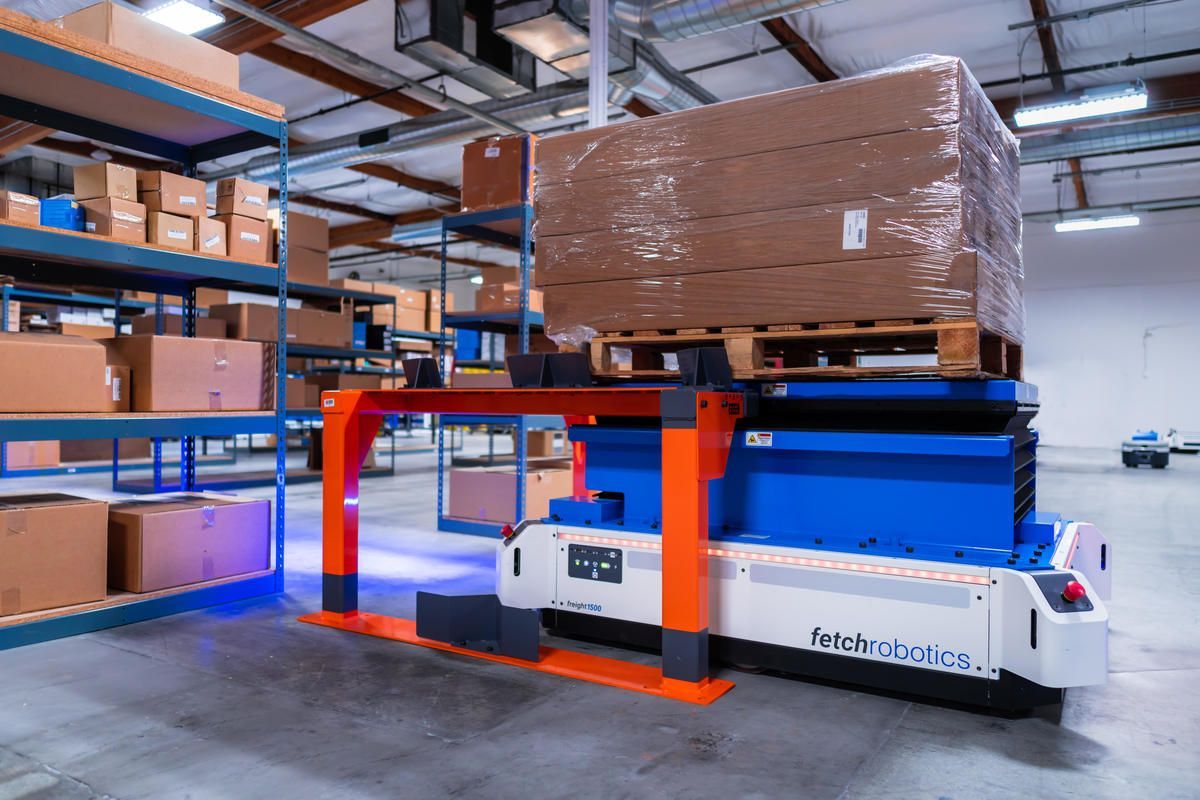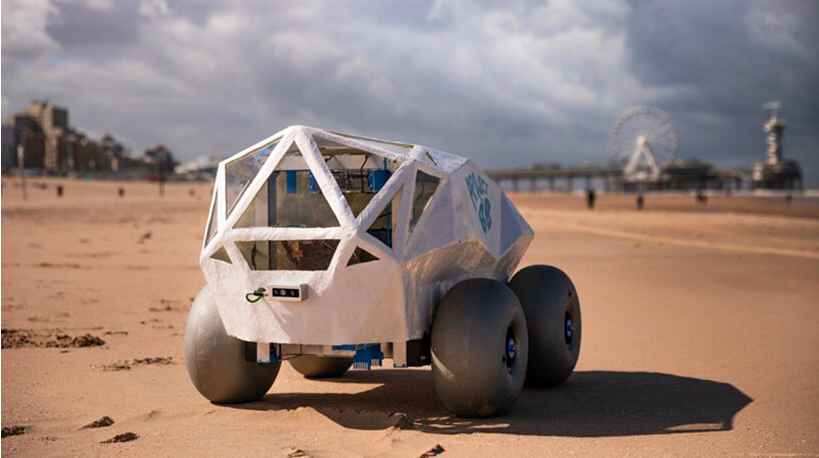
🤖 Self-propelled robots reduce the need for forklifts
By using self-propelled robots in warehouses and factories, efficiency will increase and the risk of accidents will decrease.
Share this story!
Forklifts are available in most large warehouses and factories, but they have their risks. According to figures from the US Environmental Protection Agency, OSHA, eleven percent of all forklift trucks in the United States are involved in an accident each year and 85 people die in such accidents. Here, self-propelled robots can be a solution.
Fetch Robotics is an American company that manufactures just such self-propelled robots and they are now launching their largest model to date. The new PalletTransport1500 can lift up to 1,136 kilos , which means that it can handle large pallets.
The robot does not have the forklift's characteristic forks, but goes under the pallet to lift it up. This means that the robot cannot completely replace the forklifts. A forklift must still lift the pallet to a position that the robot can enter.
But the actual transport inside the warehouse or factory, the robot can handle completely on its own without risking running over people. The forklifts are then only needed on the loading dock, which reduces the chances that they can cause accidents.
Primarily, the robot is intended to be used for transport in warehouses, but it can also be used in other places where forklift trucks drive today. GE Appliances, for example, is cutting the number of forklifts they use in their US factories by half . Here the robots go all the way out to the assembly with their load.
In addition to reducing the risk of injury, the robots also make work more efficient. Something that Fetch Robotics means is a requirement from many customers today, especially in e-commerce.
- Even the most well-organized distribution centers find it difficult to keep up with the demands that e-commerce growth places on inventory management. This creates a lot of pressure to be able to move goods in and out of the warehouses at record speed, says Stefan Nusser, product manager at Fetch Robotics.
Fetch Robotics believes that solving this by hiring more staff is not a viable option after a while. Too many people in a warehouse risk getting in the way of each other the most. Then it is better to let robots take care of fast transports and then humans can engage in more advanced tasks that the robots cannot handle. Like driving the forklifts and planning how the bearings will be designed to be as efficient as possible.
By becoming a premium supporter, you help in the creation and sharing of fact-based optimistic news all over the world.


